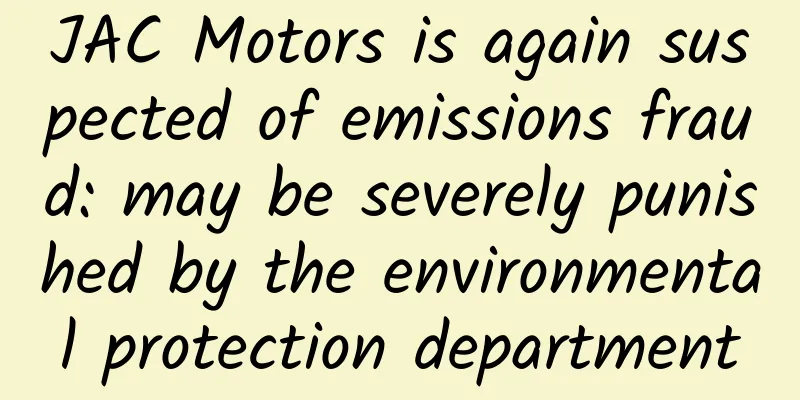Wu Daguan: The never-ending "Chinese Heart"

|
Wu Daguan is a famous aviation engine expert in my country. He has devoted his life to aviation engine scientific research, design technology, and test equipment construction, and has created many "firsts" in New China: establishing the first aviation engine research institute, presiding over the development of the first jet engine, creating the first aviation engine test base and the first industrial base, establishing the first aviation engine design and development team, and organizing the compilation of my country's first aviation engine standard specification... These pioneering works not only paved the way for scientific research at the time, but also laid the foundation for the subsequent success of engines such as the "Kunlun" and "Taihang". He is a well-deserved "Father of Chinese Aviation Engines." Crossing mountains and seas, the long road to study Wu Daguan was born in Zhenjiang, Jiangsu Province in 1916. He was poor since childhood, but fortunately he was able to complete his secondary school education with the financial support and encouragement of his uncle. In 1937, the Anti-Japanese War broke out. Influenced by Xu Teli, the Communist Party representative in Hubei, Wu Daguan had the idea of participating in the war. Later, he realized that learning advanced knowledge could help him work better for the country, so he decided to continue his studies. However, the simplicity and sincerity of the Communist Party members impressed the young Wu Daguan. Wu Daguan in middle school (picture from the Internet) From Changsha to Guangzhou to Hong Kong, by boat to Haiphong, Vietnam, and then by train to Kunming, Wu Daguan continued his studies in the Department of Mechanical Engineering of Southwest Associated University. While studying in Yunnan, he witnessed Japanese fighter planes turning people's homes into scorched earth, and developed a strong desire to "save the country through aviation", so he resolutely transferred from the Department of Mechanical Engineering to the Department of Aviation. After graduating from university in 1942, he chose to work in the first aviation engine factory in Chinese history - Guizhou Dading Aviation Engine Factory. In this small factory with only more than 100 people, there were 8 masters and doctors who returned from studying in Britain and the United States. "At that time, the chairman of the Kuomintang Aviation Committee was Soong Mei-ling, and these people thought more about the interests of the four major families." Wu Daguan vaguely felt that although there were a group of people with lofty ideals, it would be difficult for China's aviation industry to develop under the leadership of the Kuomintang. In October 1944, Wu Daguan was sent by the factory to the United States to receive professional technical training in engine manufacturing. "That road is not easy to travel!" He followed the Hump Route through the Himalayas to Pakistan, and under the escort of warships, he took a ship from India through the South Pacific, which was occupied by the Japanese army, to Australia... Recalling the road to study, Wu Daguan occasionally "showed off" the hardships and dangers, but more of it was the helplessness and unwillingness of the backwardness of the motherland's science and technology. During his time in the United States, he worked and studied for more than 16 hours a day. He not only systematically studied and mastered the entire process of piston engine design, but also came into contact with the most advanced jet engines at the time, and specialized in gear processing technology. Wu Daguan returned to China after completing his studies in 1947. He was disappointed with the corrupt rule of the Kuomintang, so with the help of the underground Communist Party of China, he brought his family to the liberated areas in 1948 and was received by Marshal Nie Rongzhen. Imitation vs. independence? The answer after 60 years of trials and tribulations “Imitation is only a transitional means. Only by imitating through introduction, digestion and absorption, and then improving and modifying based on one’s own preliminary research, technical reserves and accumulated experience, can we embark on the road of developing advanced products.” After sixty years of involvement in the aviation industry of New China, the lessons of failure and successful experiences have been condensed into the wisdom of revitalizing the aviation industry: Without a scientific research foundation of its own, it will always crawl behind others. "Jianjiao-1" aircraft (picture from the Internet) In May 1958, my country's first E-1A engine was successfully trial-produced and passed a 20-hour test run. This engine was installed on the "Jianjiao-1" aircraft and successfully flew. The successful development of the E-1A proved to the world that the Chinese can build aircraft and engines. In September 1959, the Hongqi No. 2 jet engine designed and trial-produced by Wu Daguan was successfully trial-produced, presenting a generous gift for the 10th anniversary of the National Day. In 1969, the WP-7A engine was successfully trial-produced. In 1971, my country's first turbofan engine, the WS-5 engine, was successfully trial-produced. In 1978, my country's first high-thrust turbofan engine, the WS-6 engine, was successfully trial-produced. On August 1, 1958, Wu Daguan spoke at the celebration meeting for the successful test flight of the "J-1" aircraft (Photo from the Internet) Behind each success is the hard and painful efforts of aviation pioneers represented by Wu Daguan. However, all these engines were not finalized and equipped to the troops at that time, and were eventually discontinued due to various reasons. Among them, the landmark WS-6 engine was launched 4 times, discontinued 3 times, and moved to another location 5 times. In the end, it missed the best time to equip the troops due to the long cycle. In 1980, the "Spey" engine (a domestically produced turbofan 9 engine, later renamed "Qinling") imported from the UK was successfully trial-produced and installed on the JH-7 (Flying Leopard). Since then, the voices advocating the introduction of mature foreign engines have become increasingly louder, and only a few people insist on independent research and development. "China must explore a way to independently develop aircraft engines, otherwise we will always be controlled by others in technology. We must manufacture engines with a 'Chinese heart'!" In 1985, with the strenuous efforts of Wu Daguan and eight other experts, the long-delayed "Taihang" engine (WS-10) was successfully approved. It was not until 2005 that the "Taihang" engine was finally successfully developed, and my country's third-generation engine was born. my country's aviation industry entered the fast lane of development. "Due to complex subjective and objective reasons, the aviation industry as a whole cannot meet the needs of the Air Force and civil aviation." One of the important reasons for the hesitation between introducing imitation and independent research and development is that the aviation industry needs to undertake the task of preparing for war and to ensure the rapid and continuous completion of aircraft production tasks. Under the historical conditions at the time, it must embark on a path of mainly imitation production. "After continuous exploration and experimentation, my country's aviation engine research and development has now formed a good development pattern of 'production one generation, development one generation, pre-research one generation, and exploration one generation'." Wu Daguan has finally blazed a scientific path for the development of my country's aviation industry. A life of giving is meaningful In 1938, Wu Daguan accidentally saw the movie "Les Miserables", and the line "Life is about giving, not taking" became his motto. Old walls painted half with white lime and half with paint, a ceiling with an old fluorescent lamp hanging from it, a simple foldable dining table, a worn-out sofa with bleached leather, a row of wardrobes made of packing boxes from Shenyang when they moved there, and the enamel bowls in the kitchen are like unearthed cultural relics... Walking into Wu Daguan's home is like traveling back to the 1980s. The only thing with a modern feel is a computer, which he bought when he was 80 years old to facilitate the search for information. "My father always wore this blue polyester-knitted shirt from the 1960s when he was alive." His daughter Wu Xiaoyun said as she picked up a worn-out blue shirt that had long been washed white and the cuffs were worn out. Wu Daguan and his wife at home in 1998 (Photo from the Internet) However, from 1963 to 2009, Wu Daguan paid a total of 211,000 yuan in special party dues; donations for disaster relief, poverty alleviation, and student aid totaled 93,000 yuan, totaling 304,000 yuan, accounting for about one-third of his total salary income. "Fundamentally speaking, our country is poor. Only if we live a hard life can our descendants live a happy life. Paying more party dues represents a little thought from a party member." On his deathbed, he looked up at the clear sky for the last time, as if turning his heart into the "Chinese heart" of a war eagle, continuing to guard the peace and prosperity of the motherland. Wu Daguan Aviation Engine Spirit Education Base In order to promote the scientific spirit of the older generation of aviation power experts represented by Wu Daguan, who devoted their lives to the motherland and worked hard to create the country's aviation engine industry, the China Aero Engine Research Institute has established cultural venues with Wu Daguan's office, aviation engine test exhibition hall, power culture square, etc. as the main body, to create an all-round platform for displaying the spirit of scientists in the field of aviation engines. Wu Daguan's office (provided by the Institute of Aeronautical Engineering) Statue of Wu Daguan (provided by the Institute of Aeronautical Engineering) Interior view of the test exhibition hall (provided by the Institute of Aeronautical Engineering) The building area of Wu Daguan's office is about 60 square meters. It restores Wu Daguan's former working scene and displays Wu Daguan's manuscripts, office and scientific research supplies; Wu Daguan Square has a building area of more than 500 square meters, and a statue of Wu Daguan is placed in the square; Wu Daguan Power Culture Square has a building area of more than 3,000 square meters; in 2021, the test exhibition hall was rebuilt from a certain tester and factory building, with a building area of 480 square meters, to remember the struggle history of the older generation of AECC people who never forget their original aspirations and keep their mission in mind. (Guangming Daily All-Media Reporter Zhang Xiaohua) |
<<: Can “brain-like” devices that imitate the human brain achieve true artificial intelligence?
Recommend
Recycling and value empowerment: the "retirement" journey of power batteries
This year is the year when the energy shortage ph...
Google has worked hard for three years to finally make Android phones upgrade faster
The fragmentation problem of the Android system h...
Early Star: Young Big Brother? Or the Other Half of the “Magic Star”?
Produced by: Science Popularization China Author:...
How much does it cost to attract investment in Yichun Mobile Phone Accessories Mini Program?
The advantages of WeChat mini program investment ...
Guangzhou WeChat Mini Program Mall Ranking, What are the factors that affect the ranking of mini programs?
Open the APP on your phone, no matter which e-com...
Your Guide to YouTube Video Ad Formats for 2020!
Video marketing and brand promotion through YouTu...
MU-MIMO technology: Can it really double the speed of your home internet connection?
In recent years, with the rapid development of wi...
How to retrieve all personal transfer records on WeChat? The steps are as follows
How to retrieve all personal transfer records on ...
Replacing global fonts in a rough way in Android
[[204795]] sequence Using custom fonts on Android...
How to organize activities with 0 budget and still attract and retain a large number of users!
I. Introduction, my understanding of activities 1...
Can a shrunk sweater be restored to its original state after washing?
Soft and waxy cashmere sweaters and warm sweaters...
Ocpc cost is high? 6 steps to reduce costs with Ocpc!
How to reduce the cost of Ocpc is probably one of...
China Automobile Dealers Association: Tracking of some data on China's automobile exports overseas from January to June 2023
Since 2021, with the outbreak of the global COVID...
Thirty years of mobile phones: from big brothers to smartphones, most mobile phone brands have disappeared
Mobile phones have been used in China for 30 year...
Babao Compounding Academy "Hong Kong Stock IPO Master Service Course" 3rd issue
The capital only needs to start from 10,000 to 20...









